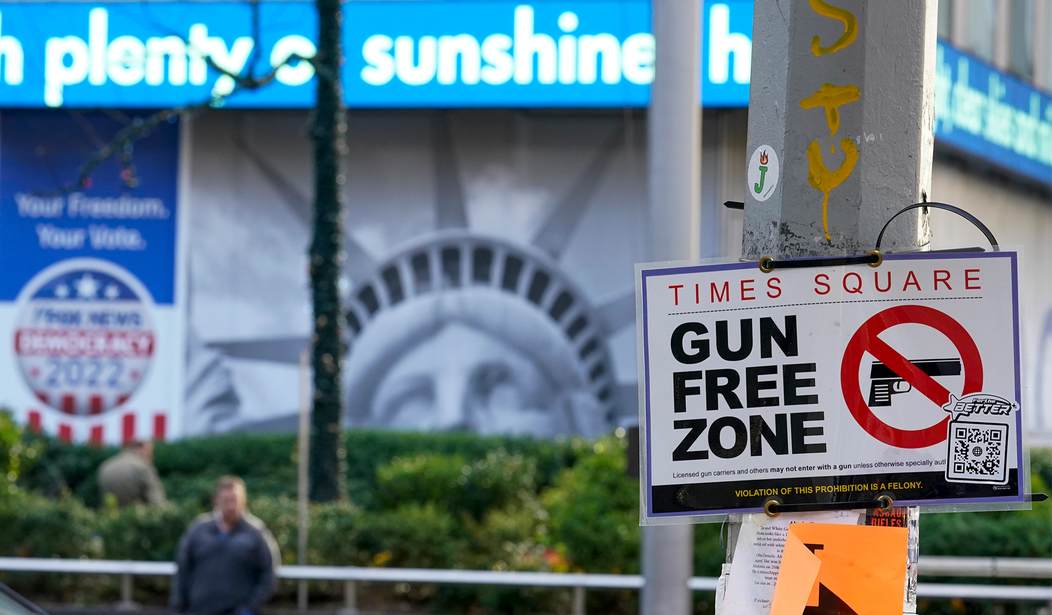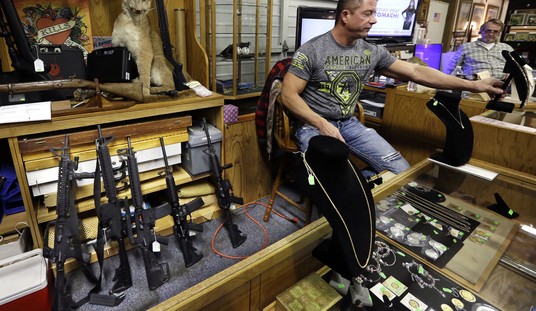We can always trust that the New York Times will have an anti-gun op-ed in the wake of any mass shooting. However, a recent one is…interesting.
Written by Nicholas Kristof, it’s, again, interesting. Mostly, I call it that because it’s a massive screed that throws tons of things against the wall, hoping some of them will stick. There’s too much there for me to cover here, so I’m going to focus on one part of it. Cam will have another later today.
Kristoff doesn’t really offer anything new here, but he recycles some old standby arguments. One, in particular, is treating violence as a public health issue.
For decades, we’ve treated gun violence as a battle to be won rather than a problem to be solved — and this has gotten us worse than nowhere. In 2021 a record 48,000 Americans were killed by firearms, including suicides, homicides and accidents. So let’s try to bypass the culture wars and try a harm-reduction model familiar from public health efforts to reduce deaths from other dangerous products such as cars and cigarettes.
Some perspective, though. Car accidents and tobacco account for far more total deaths than firearms do. If you count suicides committed with a firearm, you get close to on par with auto accidents, but since it’s stupid to argue that suicides and homicides should be counted similarly, we won’t.
Yet cigarettes, despite all the regulations, claim 480,000 lives each year. Auto accidents claim another 46,000.
In 2020, the most violent year in recent memory, we saw 19,384 homicides.
That suggests that items with heavy regulation like tobacco and cars are more deadly than guns.
Harm reduction for guns would start by acknowledging the blunt reality that we’re not going to eliminate guns any more than we have eliminated vehicles or tobacco, not in a country that already has more guns than people. We are destined to live in a sea of guns. And just as some kids will always sneak cigarettes or people will inevitably drive drunk, some criminals will get firearms — but one lesson learned is that if we can’t eliminate a dangerous product, we can reduce the toll by regulating who gets access to it.
Now, Kristoff starts off by saying criminals are going to get guns, then says we can reduce the problem by regulating who gets access to guns?
Honestly, this makes absolutely no sense. It’s like he’s so enamored with the idea of gun control he can’t see the flaw in his own “logic.”
That can make a huge difference. Consider that American women age 50 or older commit fewer than 100 gun homicides in a typical year. In contrast, men 49 or younger typically kill more than 500 people each year just with their fists and feet; with guns, they kill more than 7,000 each year. In effect, firearms are safer with middle-aged women than fists are with young men.
We’re not going to restrict guns to women 50 or older, but we can try to keep firearms from people who are under 21 or who have a record of violent misdemeanors, alcohol abuse, domestic violence or some red flag that they may be a threat to themselves or others.
Except, with the two mass shootings we just saw, the killers were well over the age of 21.
Further, most mass shooters don’t have a criminal record of violent misdemeanors, alcohol abuse, or domestic violence. Sure, those things exist, like with the Parkland killer, yet we already prohibit gun sales to those with domestic violence charges. He still purchased a weapon.
There’s another problem with this whole “public health” argument, particularly by comparing the attempt to regulate guns with previous efforts to regulate cars.
You see, car accidents account for tens of thousands of deaths each and every year. However, they’re rarely used in homicides. Their intentional misuse may result in unintended fatalities–think crashes from drag racing, as an example–but the vast majority of car fatalities are the result of unintentional collisions. No one is trying to hurt others.
As a result, we can mandate things like seatbelts and airbags to try and mitigate the danger. This is meant to save lives from these unintentional incidents.
Likewise, tobacco users aren’t trying to kill themselves. In the past, the industry hid information they knew would show their products were dangerous.
Guns don’t hide the danger and don’t generally take lives accidentally. They generally don’t just go off unless there’s a flaw in the mechanism, either through needing repair or via a poor design. When a gun is used to claim a life, it’s generally intentional.
That’s why this cannot be viewed as a public health crisis, at least not one focused on guns rather than people.








Join the conversation as a VIP Member